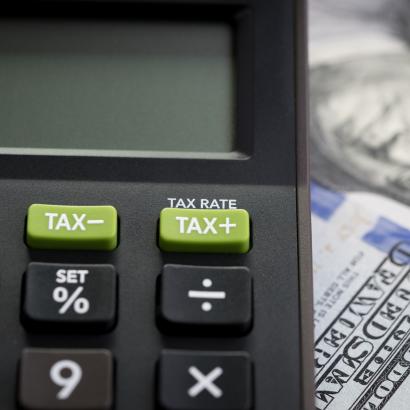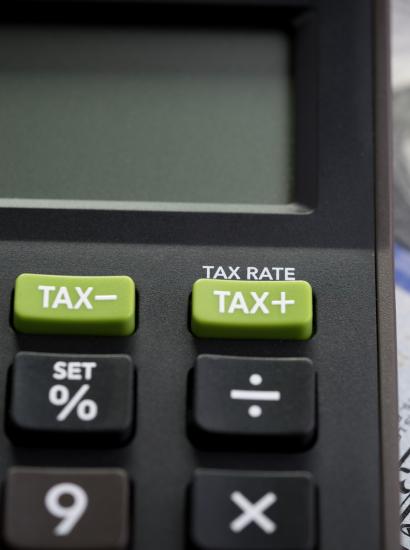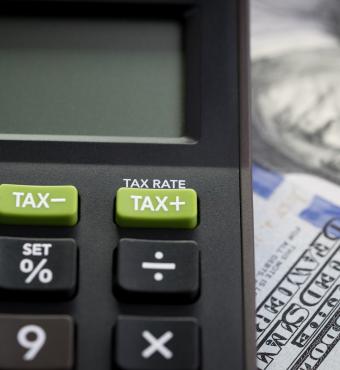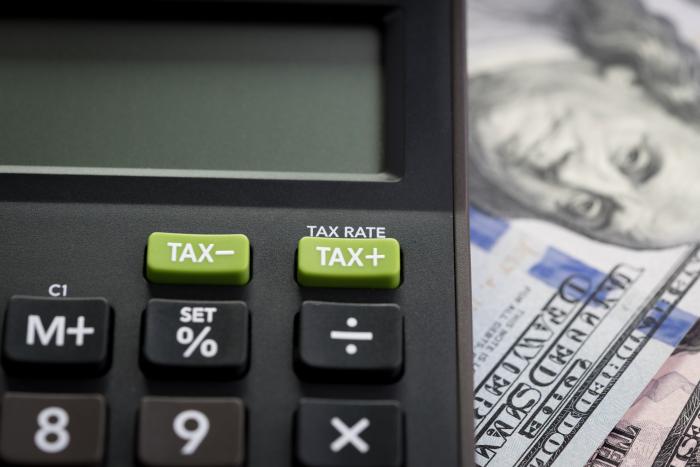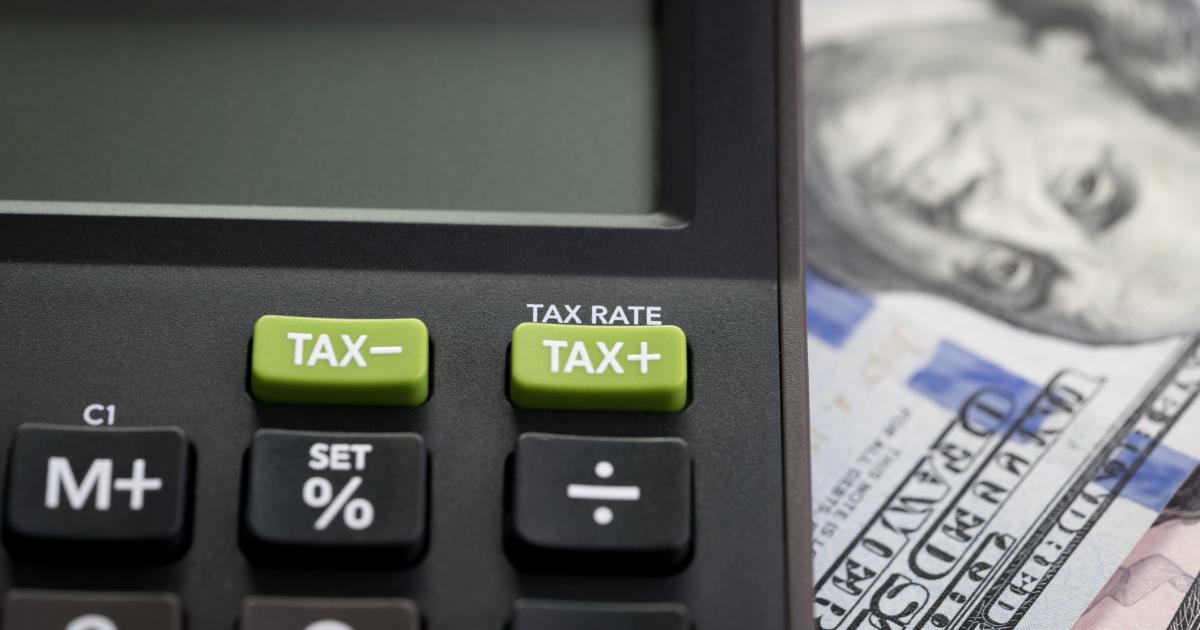In June 2020, I argued, in “Just Say No to State and Local Bailouts,” against the federal government giving state governments money to make up for state governments’ budget deficits. I pointed out two facts: (1) the state budget deficits were not nearly as bad as many governors and others had claimed, and (2) to the extent they had deficits, state governments could cut spending.
I turned out to be right on point 1, and although I was also right on point 2, few state governments dealt with their deficits by cutting spending. But because the federal government gave huge subsidies to state governments, many of those governments now have bulging surpluses. Now they can actually cut tax rates. The good news is that many of them are doing so. The bad news is that many of them are not. The further bad news is that many state governments don’t index their tax brackets for inflation. So the high inflation that we have experienced for more than a year is driving taxpayers in those unindexed states into higher tax brackets. Inflation is acting as a revenue machine for state governments. Those fifteen state governments plus the government of the District of Columbia should index tax brackets immediately.
State Budget Surpluses
In fiscal year 2021, according to the National Association of State Budget Officers, revenue for the fifty states increased by a whopping 14.5 percent. Some of this was the natural result of the V-shaped recovery that occurred after lockdowns were relaxed. Much of it was due to large federal government payments to state governments.
These surpluses give state governments an opportunity to inflation index. By doing so, they will not face a large loss in revenue but will, instead, find that revenues grow more slowly. So they will have time to implement gradual spending cuts if needed to balance their budgets.
Inflation and Bracket Creep
The US government and many state governments have progressive income taxes. The word “progressive” doesn’t mean “good.” All it means is that as you progress up the income ladder, your marginal tax rate, which is your tax rate on additional income, increases. When the rates were set for the United States, there was a link between gold and the dollar. The US government’s commitment to keeping the price of gold at $35 per ounce limited its ability to print money and, thus, limited its ability to create inflation. But on August 15, 1971, President Nixon cut the last remaining link between the dollar and gold. Up until then, the US government stood ready to redeem foreign governments’ dollars for gold at $35 an ounce. But on August 15, Nixon closed the “gold window.” That meant that one remaining legal constraint on the Federal Reserve’s ability to print money was gone. The result, not surprisingly, was a decade of high inflation. From 1971 to 1981, the annual inflation rate averaged 8.4 percent.
This meant that tax brackets that had been designed for relatively high-income people were increasingly applicable to middle-income people and tax brackets designed for middle-income people were increasingly applicable to lower-income people. A table in the 1982 Economic Report of the President tells the tale. In 1970, a four-person family with one half the median income was in a 15 percent tax bracket. By 1980, that family was in an 18 percent tax bracket. A four-person family with the median income paid a marginal tax rate of 20 percent in 1970 and 24 percent in 1980. A four-person family with twice the median income paid a marginal tax rate of 26 percent in 1970 and a whopping 43 percent in 1980. And remember that this is just the family’s personal income tax rate and did not include either the Medicare (HI) or the Social Security (FICA) tax.
Starting in the late 1970s, people started using a term to describe the phenomenon: bracket creep. Your tax bracket could creep up even if your real income stayed constant. That necessarily meant that your after-tax real income fell.
Indexing Tax Brackets
Not surprisingly, Milton Friedman was ahead of the curve in advocating, in 1974, that tax brackets be indexed for inflation. And Ronald Reagan, upon becoming president, wanted to do something about the problem. Although I’ve never seen this discussed, I would bet that Reagan badly regretted increasing the top tax brackets in California shortly after he became governor in 1967. He was facing a substantial state budget deficit, but he chose higher marginal tax rates on higher-income people to deal with it. For example, California’s marginal tax rate on people with taxable income of $30,000 or more was 7 percent in 1966. An income of $30,000 in 1966, adjusted for inflation, would be $268,694 today. In 1967, Reagan and the legislature raised the marginal tax rates for people making $25,000 to $28,000 to 9 percent and for people making $28,000 or more to 10 percent. His tax rates remained, inflation took off, and by 1980, middle-income Californians were paying tax rates that Reagan, his advisers, and the California legislature had intended only for high-income Californians. Things bad begun make strong themselves by ill, as Shakespeare put it.
Reagan seems to have learned the lesson. In the 1981 Economic Recovery Tax Act, he and Congress cut marginal tax rates at all income levels annually from 1982 through 1984, and indexed tax brackets for inflation from 1985 on. The result is that inflation by itself cannot put you in a higher tax bracket. Well, almost. The income levels above which Social Security recipients pay taxes on their Social Security benefits, introduced in 1984, have never been adjusted for inflation. But those not getting Social Security benefits cannot be put in higher tax brackets by inflation alone.
State Indexation
Several state governments indexed their state income tax brackets well before the feds did. The Tax Foundation, an organization in Washington, DC, that closely follows tax policy and publishes high-quality data on taxes, points out that Arizona, California, and Colorado introduced indexing in 1978 and Iowa, Minnesota, and Wisconsin did so in 1979. Today, notes the Tax Foundation, seventeen of the thirty-three states (counting the District of Columbia as a state) with graduated-rate income taxes do index for inflation. Of the remaining eighteen, seven states—Alaska, Florida, Nevada, South Dakota, Texas, Washington, and Wyoming—have no state income tax. That leaves eleven that have flat-rate tax systems, systems in which everyone pays the same rate: Colorado, Illinois, Indiana, Kentucky, Massachusetts, Michigan, New Hampshire, North Carolina, Pennsylvania, Tennessee, and Utah.
Which state governments have not indexed their tax brackets for inflation? They are, in alphabetical order and counting DC as a state, Alabama, Connecticut, Delaware, DC, Georgia, Hawaii, Kansas, Louisiana, Maryland, Mississippi, New Jersey, New Mexico, New York, Oklahoma, Virginia, and West Virginia.
Notice that this is not a clearcut blue state/red state divide. There are six states—Alabama, Kansas, Louisiana, Mississippi, Oklahoma, and West Virginia—that are generally thought of as red. It’s true, though, that none of these six states has a large population. So if we divide, not according to number of states but according to population, then there is a bit of a red/blue divide. DC, Maryland, New Jersey, New York, and Virginia, all blue states generally, have a total population of 44.61 million while the six red states listed above have less than half that, only 21.35 million people.
Fortunately, some state governments that don’t index are moving toward a flat tax rate or even a zero income tax. In a February op-ed in the Wall Street Journal titled “States Get Serious About Tax Cuts,” Grover Norquist, president of Americans for Tax Reform, sees many hopeful signs. Legislators in Louisiana plan to reduce income tax rates, according to Norquist, “every year triggers are met.” This could, he notes, “take Louisiana’s income tax rate to zero by 2034.” And in January, Mississippi’s House of Representatives voted 96–12 to cut tax rates to zero. According to a Wall Street Journal news story, Oklahoma Governor Kevin Stitt “wants to switch the income tax to a flat tax.”
There is bad news, though. Many states are neither cutting marginal tax rates nor indexing rates. And there is a move in Massachusetts, whose constitution guarantees a flat tax rate, to change the constitution in a referendum that would allow a surtax on people with taxable income of $1 million or more. Voters will vote on it in November.
Why Now?
Indexing tax rates are inflation has always been a good idea. It didn’t matter much when inflation was averaging 2 percent annually. But it matters a lot when the annual inflation rate is 8 percent and even when it falls to “only” 5 or 6 percent.
One reason we might expect both reductions in marginal state income tax rates and indexing of tax brackets is that there seems to be more competition among states for residents, especially higher-income residents. Also, people seem to be increasingly mobile across states. One factor in this is a controversial provision of the 2017 tax cut that limits the deduction for state and local taxes, the so-called SALT deduction, to $10,000. That makes people in high-tax states like New York, California, and New Jersey more likely to move to low-tax or no-tax states. So this would be a propitious moment, from a number of viewpoints, for state governments to cut marginal tax rates and to index.
The stakes in the short run are small. But as California’s experience showed from the mid-1960s to the late 1970s, in the long run, they are huge.
To adapt a chant that the left often uses: What do we want? Indexing of tax brackets. When do we want it? Now.








